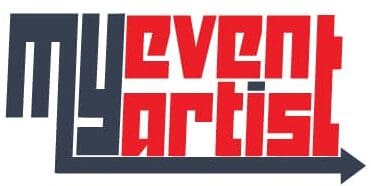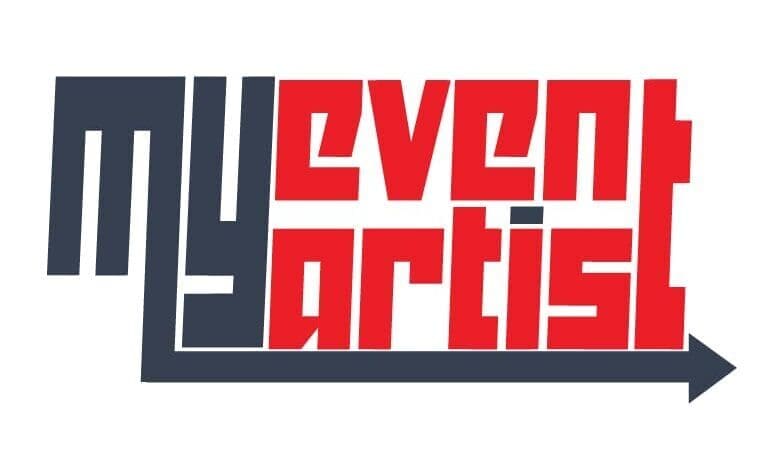Creating an exceptional sports logo requires more than just a creative concept—it necessitates expert execution, particularly when it comes to applying textures that enhance the overall design. Incorporating dynamic textures can transform a flat logo into a visually stunning piece that draws attention and conveys energy and movement. At My Event Artist, we are dedicated to assisting event organizers and businesses in the sports industry with engaging logo designs. This blog will delve into the importance of using textures in sports logos, detail how to effectively implement them using Adobe Illustrator, and provide valuable tips to ensure your designs stand out.
Understanding the Role of Textures in Logo Design
Textures breathe life into static elements, adding depth, interest, and personality to logos. In sports, where energy, competition, and excitement are paramount, the use of dynamic textures can significantly impact how a logo is perceived.
Why Use Textures?
- Visual Interest: Textures can elevate a logo from ordinary to extraordinary, engaging viewers and encouraging them to take a closer look.
- Emotional Connection: Certain textures evoke specific feelings. For instance, rough textures can imply strength and resilience, while smooth textures might convey elegance and sophistication.
- Brand Identity: Incorporating unique textures can help to establish a distinct style that resonates with the target audience, making the brand more memorable.
- Versatility: Textured logos often translate better across different mediums, from digital display to print, maintaining their appeal in various contexts.
Key Types of Textures for Sports Logos
Before diving into the design process, it’s essential to understand the types of textures that work well in sports logos:
- Grunge: Rough or distressed textures can add a rugged and gritty feel, perfect for sports that emphasize strength, like football or wrestling.
- Fabric: Textures that resemble fabric (e.g., denim, canvas) can evoke a sense of authenticity and connection, making them ideal for logos related to apparel or outdoor sports.
- Metallic: Sleek, shiny textures often signify quality and sophistication. Useful in logos for motorsports or high-end sporting events.
- Nature-Inspired: Textures that mimic natural elements like wood, stone, or organic patterns can appeal to outdoor and adventure sports.
Creating Dynamic Textures in Adobe Illustrator
Using Adobe Illustrator provides a versatile platform for creating unique and dynamic textured logos. Let’s explore the step-by-step process of incorporating textures into your sports logo design:
1. Preparing Your Workspace
Start by setting up your document in Illustrator:
- Open Adobe Illustrator and create a new document. Choose dimensions that suit your primary application (web, print, etc.).
- Set up your artboard grid for alignment and utilize the Smart Guides for precise placements as you design.
2. Base Design Creation
Before adding textures, establish a solid foundation for your logo:
- Use Shape Tools: Begin with the basic shapes that represent your logo—a circle for a badge, a banner, or any other geometric forms.
- Add Typography: Include the text elements of your logo, selecting a font that complements your design and resonates with the event’s theme.
3. Apply Basic Gradient or Color
Solid colors can act as the first layer before you add texture:
- Color Choice: Select colors that reflect the emotions and energy of the sport. Use the Color Picker or Swatches Panel to ensure consistency.
- Gradients for Depth: Implement simple gradients (using the Gradient Tool) on shapes to create a sense of depth and dimension before introducing textures.
4. Implementing Textures
Now, it’s time to bring in dynamic textures to enhance your sports logo:
Option A: Using Texture Images
- Source High-Quality Textures: Find high-resolution textures online (ensure they are royalty-free) or create your own by scanning fabric, wood, or other materials.
- Place the Texture: Import your texture image into Illustrator using File > Place. Scale and position it over the desired area of your logo.
- Clipping Mask: Select the texture and the shape you want it to fill, and use Object > Clipping Mask > Make to create a textured fill for your logo.
- Blend Modes: Experiment with the Transparency Panel and adjust the blend modes (like Overlay or Multiply) to integrate the texture seamlessly with your logo’s base colors.
Option B: Creating Textures Digitally
- Brush Tool: Use the Brush Tool to create custom textures. Illustrator offers various brush styles (like Scatter or Art Brushes) that can provide unique surface appearances.
- Appearance Panel: Utilize the Appearance Panel to add multiple strokes or effects to your shapes, creating a layered texture effect. Consider using a combination of strokes, fills, and opacity changes.
- Pattern Creation: Create a texture pattern by defining selections as patterns under Object > Pattern > Make. This allows you to fill shapes with consistent textures.
5. Refining the Logo with Effects
Once you have applied textures, refining your logo enhances its impact:
- Add Shadows: Implement drop shadows for depth using Effect > Stylize > Drop Shadow. Adjust parameters like blur and opacity to simulate light accurately.
- Highlights: Create highlights by adding lighter textures or colors near the top of shapes to simulate light reflecting off surfaces.
- Final Adjustments: Zoom in and tweak details, ensuring that the textures complement each other and maintain logo coherence.
6. Exporting Your Texture-Enhanced Logo
After finalizing your logo design, it’s crucial to export it for various uses:
- File Formats: Save your logo as a vector file (AI, SVG) for scalability alongside a raster format (PNG, JPEG) for web use.
- Export Settings: When exporting raster images, adjust settings for resolution, especially if the logo will be printed, ensuring a minimum of 300 DPI.
Tips for Effective Texture Use
While textures enhance logo designs, a few essential tips can help you use them wisely:
- Keep It Cohesive: Ensure that the textures used align with the overall brand message and are consistent with the style of the sport represented.
- Less is More: Use textures sparingly to avoid visual clutter. Too many competing textures can dilute the impact of your logo.
- Test Legibility: Ensure your logo remains clear and legible at various sizes. Avoid busy textures in areas that require easy readability.
- Seek Feedback: Share your designs with peers or potential audience members for constructive feedback. Others may provide insights on the visual impact and emotional response your design evokes.
- Stay On-Trend: Stay updated with design trends for sports logos to ensure your work remains fresh and relevant.
Conclusion: Elevate Your Logo with Dynamic Textures
Incorporating dynamic textures into sports logo design can significantly enhance the visual appeal and message of your brand. By utilizing Adobe Illustrator’s robust tools, you can create logos that not only capture attention but also resonate with your audience on a deeper level.
At My Event Artist, we recognize the importance of high-quality logo designs tailored to the specific needs of each event. Explore our extensive range of print-ready vector logo designs and customizable fonts available at My Event Artist Shop. Should you need a custom logo design to reflect the unique essence of your sporting event, feel free to reach out to us!
Keywords: sports logo design, dynamic textures, Adobe Illustrator, custom logos, branding strategies, vector graphics
#sportslogodesign, #dynamictextures, #AdobeIllustrator, #customlogos, #brandingstrategies, #vectorgraphics



Leave a Reply